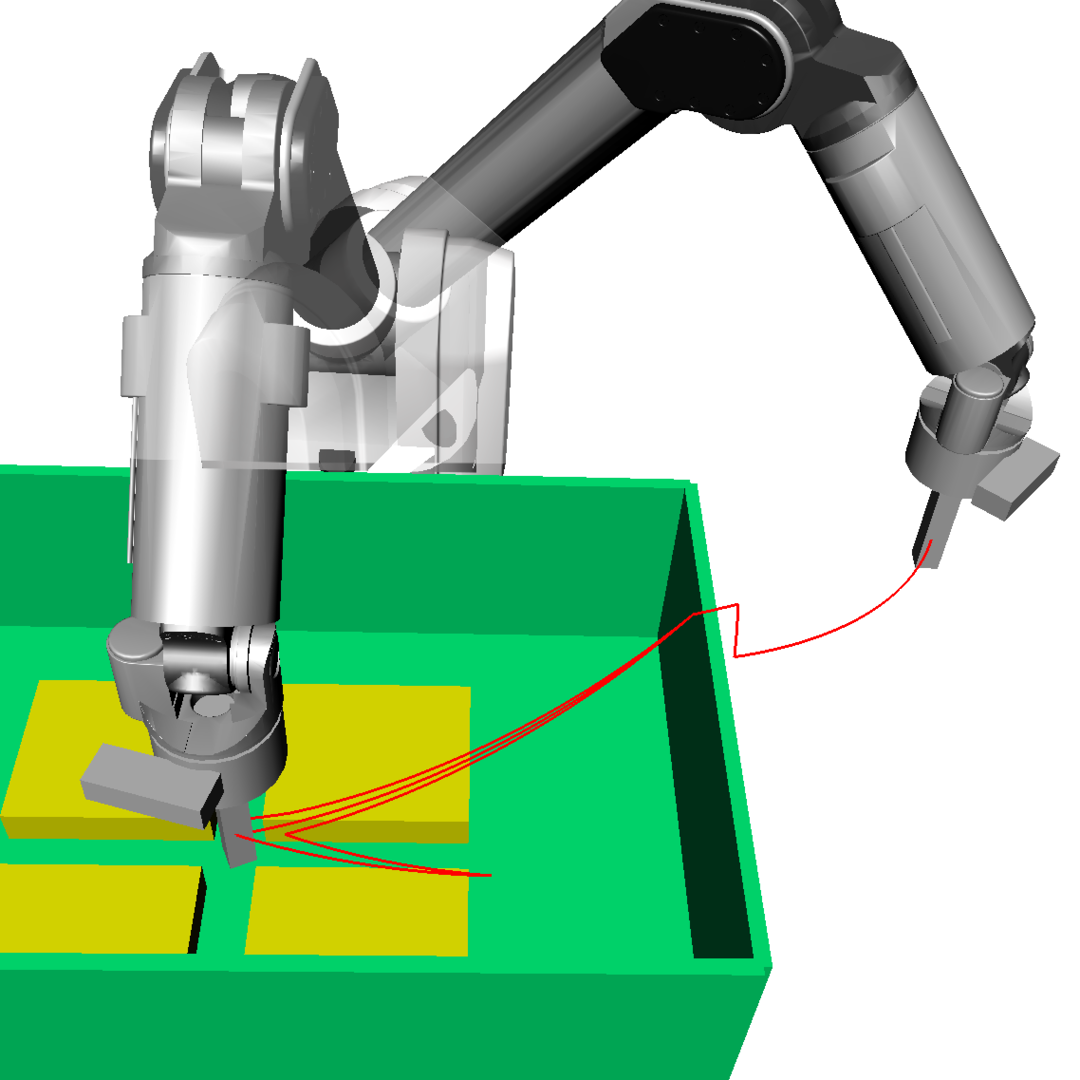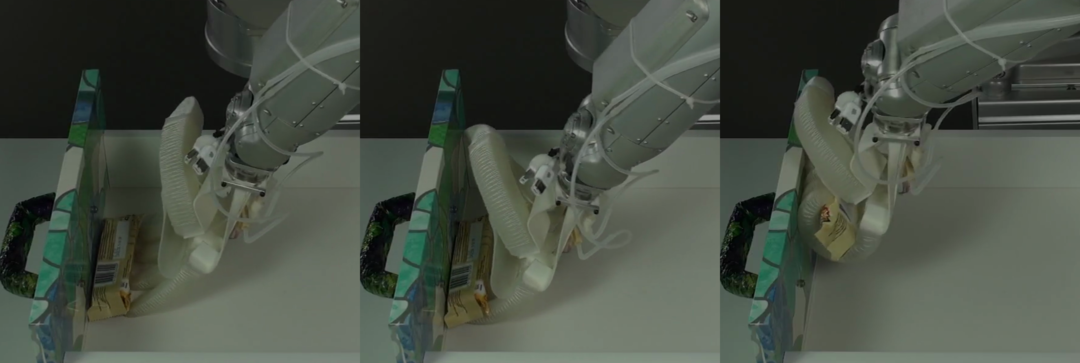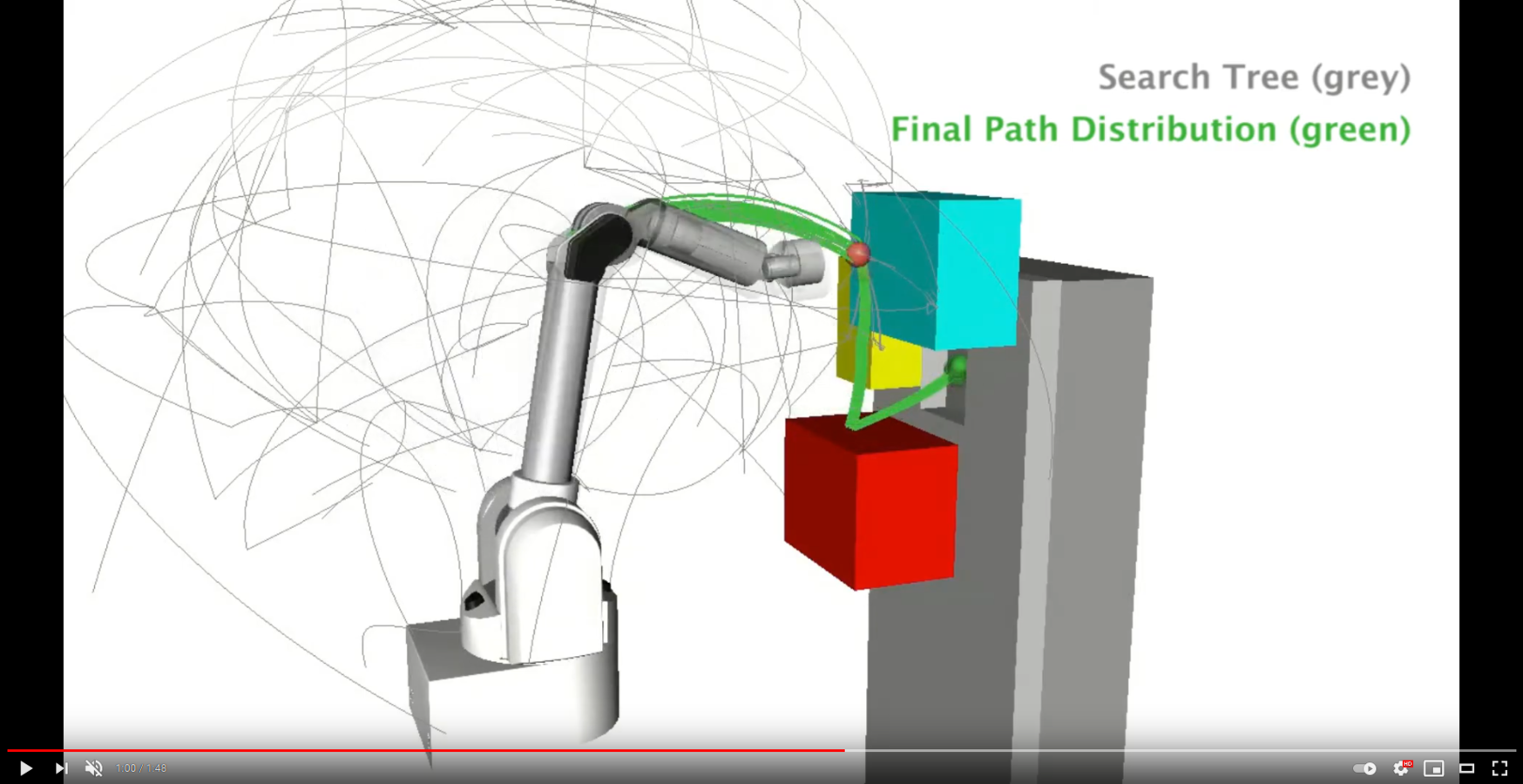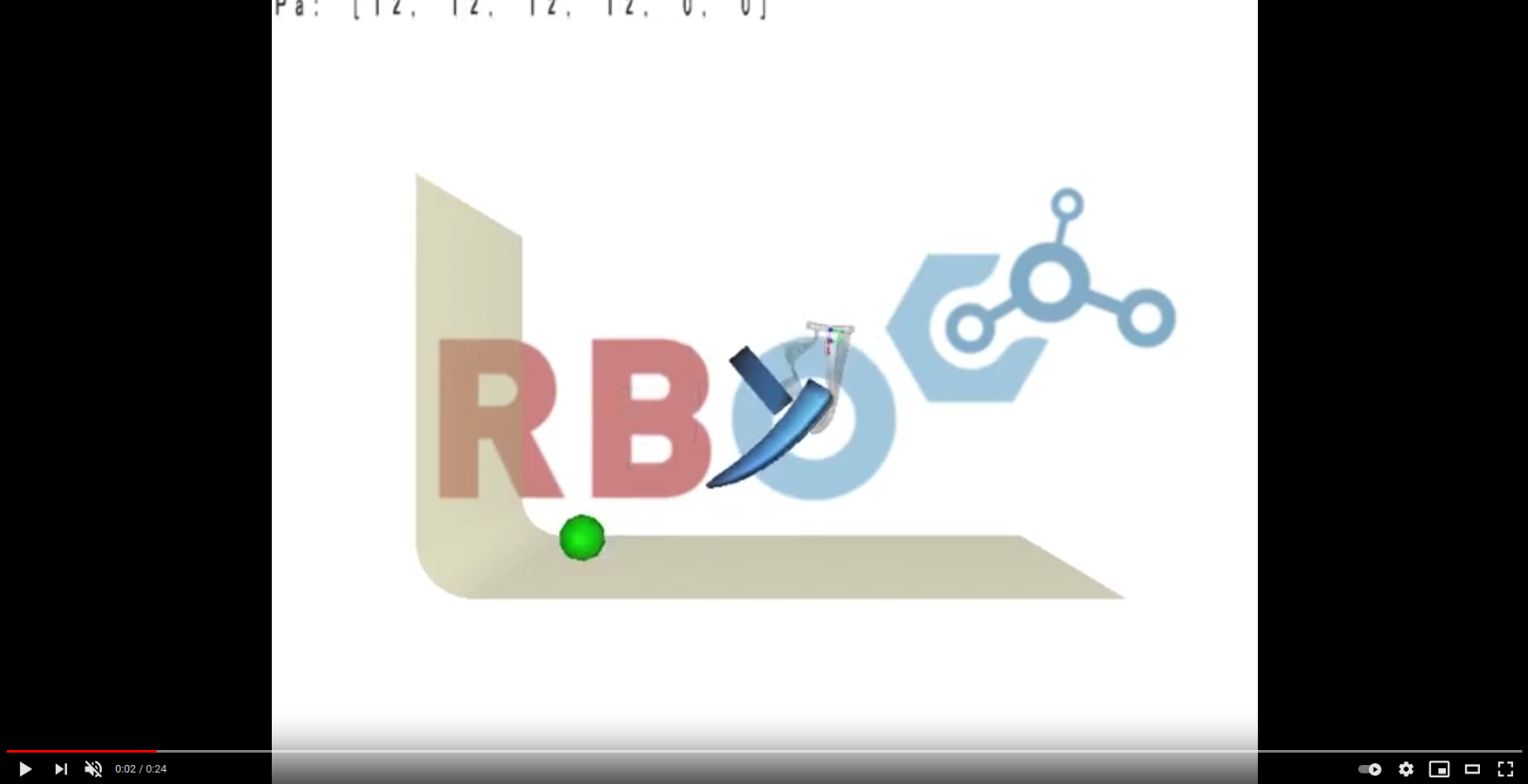Manipulation Planning
 © RBO
© RBO
Even though grasping has been a central topic in robotics for decades, robots still have great difficulty to pick up arbitrary objects when they operate in open, unknown environments or under uncontrolled conditions. Lifting this limitation would make using robots fit for many repetitive chores: robots could check and restock supermarket aisles, tidy up households, dispatch mail orders at distribution centers, collect ripe fruits, or do ecological pest control by selectively removing bugs.
To make this vision a reality, robots have to learn to grasp as reliable as humans. We try to discover the tricks people unconsciously employ when they cannot rely on their perception, and transfer these insights to robots. One such strategy is to exploit the structure of the environment to guide hand and finger motion quickly and reliably during the grasp.
The lead effort for the grasping projects discussed below are funded by the Soft Manipulation (SOMA) Horizon 2020 EU project. Please visit the project website for more information.
How can we build robots that can exploit constraints to motion rather than avoid them? How do we control such robots? We explore these questions in our research project on soft hands.
Perception and Planning of Grasps
 © RBO
© RBO
Contact Persons
Clemens Eppner, Jessica Abele
Our approach to grasping is motivated by the fact that humans don't avoid contact with the environment but rather exploit it to generate haptic feedback complementing visual feedback. This exploitation of environmental constraints simplifies the grasping problem by converting a high-dimensional configuration search problem into successive local searches guided by these environmental constraints, such as surfaces or edges.
We are developing algorithms that model the environment as a collection of environmental constraints which can be used to generate reactive feedback plans that lead to robust and reliable grasps.
Reducing uncertainty with motion planning

Bitte beachten Sie: Sobald Sie sich das Video ansehen, werden Informationen darüber an YouTube/Google übermittelt. Weitere Informationen dazu finden Sie unter Google Privacy.
Contact Person
Arne Sieverling, Előd Páll
Uncertainty is the major obstacle for robots manipulating objects in the real world. A robot can never perfectly know its position in the world, the position of objects, and the outcome of its actions. A particularly hard challenge is motion planning under uncertainty. How should the robot move, if the model of the world might be wrong or incomplete?
However, our approach reasons about uncertainty and contact. A robot can significantly reduce uncertainty if it uses contact sensing to establish controlled contact with the environment. Moreover, the robot's capabilities are increased if it anticipates contact events that can happen during the execution of the plan. Our goal is to develop algorithms that can plan under uncertainty while exploiting contact and reasoning about sensor events during planning for high dimensional motion problems.
Environment Design for Planning Problems

Bitte beachten Sie: Sobald Sie sich das Video ansehen, werden Informationen darüber an YouTube/Google übermittelt. Weitere Informationen dazu finden Sie unter Google Privacy.
Contact Person
Jessica Abele
In classical motion planning the environment is considered to be static. But changing the environment can improve planning e.g. removing an obstacle to free the path to the goal. Part feeders, fixtures and conveyor belt systems are examples of industrial engineered environments. Safety rails, coin slots and traffic signs are examples of our every day life.
We are developing automated design algorithms that engineer the environment to increase grasp robustness. The focus of our research on environmental design lies on design strategies in the context of motion/grasp planning with contact.
Funding
Soft Manipulation (SoMa) - funded by the European Commission in the Horizon 2020 program, award number 645599, May 2015 - April 2019. Alexander von Humboldt professorship - awarded by the Alexander von Humboldt foundation and funded through the Ministry of Education and Research, BMBF,
July 2009 - June 2014
Publications
2018
Contingent Contact-Based Motion Planning
IEEE/RSJ International Conference on Intelligent Robots and Systems (IROS), Seite 6615–6621
Oktober 2018
2017
Handshakiness: Benchmarking for Human-Robot Hand Interactions
IEEE/RSJ International Conference on Intelligent Robots and Systems (IROS), Seite 4982-4989
September 2017
Morphological Computation: The Good, the Bad, and the Ugly
IEEE/RSJ International Conference on Intelligent Robots and Systems (IROS), Seite 464-469
September 2017
Automated Co-Design of Soft Hand Morphology and Control Strategy for Grasping
IEEE/RSJ International Conference on Intelligent Robots and Systems (IROS), Seite 1213-1218
September 2017
First Analysis of Environment Design for Motion Planning with Contact
Juli 2017
Towards Motion Plans That React to Contact Events
RSS workshop: Revisiting Contact - Turning a problem into a solution
Juli 2017
Exploiting Contact for Efficient Motion Planning Under Uncertainty
RSS workshop: Revisiting Contact - Turning a problem into a solution
2017
Interleaving Motion in Contact and in Free Space for Planning Under Uncertainty
IEEE/RSJ International Conference on Intelligent Robots and Systems (IROS), Seite 4011-4017
2017
Visual Detection of Opportunities to Exploit Contact in Grasping Using Contextual Multi-Armed Bandits
IEEE/RSJ International Conference on Intelligent Robots and Systems (IROS), Seite 273-278
2017
2016
A Compact Representation of Human Single-Object Grasping
IEEE/RSJ International Conference on Intelligent Robots and Systems (IROS), Seite 1954-1959
Oktober 2016
A Novel Type of Compliant and Underactuated Robotic Hand for Dexterous Grasping
The International Journal of Robotics Research, 35 (1-3) :161-185
März 2016
2015
Exploitation of Environmental Constraints in Human and Robotic Grasping
The International Journal of Robotics Research, 34 (7) :1021-1038
Juni 2015
A Taxonomy of Human Grasping Behavior Suitable for Transfer to Robotic Hands
Proceedings of the IEEE International Conference on Robotics and Automation (ICRA), Seite 4286-4291
Mai 2015
Planning Grasp Strategies That Exploit Environmental Constraints
Proceedings of the IEEE International Conference on Robotics and Automation (ICRA), Seite 4947 - 4952
Mai 2015
Soft Hands for Reliable Grasping Strategies
Kapitel Soft Hands for Reliable Grasping Strategies, Seite 211–221
Herausgeber: Springer-Verlag
2015
211–221
2014
Planning Grasp Strategies That Exploit Environmental Constraints
September 2014
A Novel Type of Compliant, Underactuated Robotic Hand for Dexterous Grasping
Robotics:Science and Systems (RSS)
2014
2013
Exploitation of Environmental Constraints in Human and Robotic Grasping
International Symposium on Robotics Research (ISRR), Seite 1021-1038
Dezember 2013
Grasping Unknown Objects by Exploiting Shape Adaptability and Environmental Constraints
Proceedings of the IEEE/RSJ International Conference on Intelligent Robots and Systems (IROS), Seite 01-07
November 2013
2012
A Compliance-centric View of Grasping
Department of Computer Engineering and Microelectronics, Technical University Berlin
Technical Report
Februar 2012
2011
Refactoring Grasping
Juni 2011
2005
A Framework for Learning and Control in Intelligent Humanoid Robots
International Journal of Humanoid Robots, 2 (3) :301-336
2005

